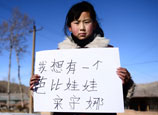
Village heads, county-level officials and law enforcement officers are among the officials most vulnerable to a "public image crisis," according to a report by a public administration expert.
The past year has seen more government officials rocked by scandals, according to Tang Jun, director of the crisis management center at the Renmin University of China and author of the 2012 Report on Image Crisis of Officials.
"After the scandals, authorities did not pay adequate attention to repairing the damage to the government's image, thus creating the impression for the public that there are more officials with similar problems," Tang said.
"Officials at the grassroots level are more vulnerable to public image damage because they often handle services to the people at the grassroots level and profit allocations," he said.
The report was based on a 2012 study on handling public image crises that was issued by the Chinese Academy of Social Sciences, and research into typical public image crises that year.
"It draws lessons from the large number of cases in 2012. For officials, a public image crisis is risky and can cause an instant fall from power," he said.
Tang said 2012 was a year when the image of officials was under constant threat. Government bodies need to get better at dealing with the challenges that come from the Internet, especially when public image is brought into question.
Sex scandals, the exposure of unearned wealth, and involvement in family member's illegal activities are common sources of government officials' public image crises, the report said.
The report named 10 such crises involving officials in 2012, including a sex scandal involving Lei Zhengfu, former Party chief of Beibei district in Chongqing; and Yang Dacai, head of the work safety administration of Shaanxi province, who was removed from his post for serious violations of discipline after Internet users found he possessed a number of expensive watches.
Possessing luxury items and real estate are common traits of officials who face an image crisis.















 Busiest line in Beijing: Subway line 10 has reached a daily transportation of 1 million passengers on average
Busiest line in Beijing: Subway line 10 has reached a daily transportation of 1 million passengers on average


![]()
